- Home
- Enclosure Ratings
- Enclosure Type
- Enclosure By Material
- Enclosure By Mount
- Traffic Control
- Applications
- Stock Enclosures
- Custom Fabrication
- About Us
- Contact Us
- Blog
- What Makes Bison Profab Unique?
- Bison Profab Upgrades Capabilities
- Our View On Diversification
- Bison ProFab Passes ISO 9001:2008 Quality Management System Re-certification
- Polyurethane Gasket VS Silicone Gasket
- Seamless Pour In-place Gaskets vs. Glued Strips
- MIG, TIG, and Heliarc Welding
- IP Protection Ratings vs. NEMA Equivalency
- The Evolution of Industrial Enclosures - Part II
- The Evolution of Industrial Enclosures - Part I
- Things You Should Know When Designing an Enclosure
- ATEX and IECEx Enclosures
- Frequently Asked Questions
- Careers
IP Protection Ratings vs. NEMA Equivalency
Electronics play a critical role in a variety of industrial applications. In turn, they demand reliable enclosures that protect against damage related to foreign contaminants. By safeguarding complex circuitry from dust, moisture and accidental contact, enclosures prevent costly damage, while also protecting unwitting people from possible injury. That said, because industrial needs vary, organizations often require special enclosures that offer protection against specific hazards.
Assessing Enclosure Capabilities with IP Codes
An enclosure’s capabilities are reflected by Ingress (IP) Protection Ratings or IP Codes. Provided as numerical and letter values, these codes offer insight into an enclosure’s ability to protect against certain materials. In addition to other details, IP Protection Ratings offer information about an enclosure’s ability to keep circuitry safe from:
- Solid particles, such as screws, tools, thick wires or dust.
- Liquid ingress, including dripping water, sprayed water, splashing water or continuous immersion.
Other IP Codes are also used to rate an enclosure’s ability to withstand high voltage, coolant, movement, weather conditions, impact and more. Ultimately, these codes are intended to provide users with more detailed information in place of vague marketing jargon, such as waterproof, for instance.
The IEC (International Electrotechnical Commission) sets for the IP rating system which classifies the protection levels different types of enclosures can provide against the ingress of liquids and/or solid objects.
Manufacturing NEMA Enclosures
National Electrical Manufacturers Association (NEMA) Equivalency
Like IP Protection Ratings, NEMA enclosure ratings, performance standards set by the National Electrical Manufacturers Association (NEMA), provide valuable information about an electrical enclosure’s capabilities. By giving enclosures grades, NEMA separates them into categories or “types” which provide insight into an enclosure’s ability to protect against everything from submersion to dust to corrosive agents and more.
That said, not every NEMA rated enclosure is created equal and a manufacturer’s NEMA rating may only be their claim to the products level of environmental performance. Although most reputable enclosure manufacturer’s can or will provide a warranty on their products, some will also provide a certification label provided by a third party testing agency.
This can provide an additional level of confidence for the purchaser, in the quality and expected performance of the product. The most recognized agency’s for testing and certification of NEMA rated industrial enclosures are Underwriters Laboratories (UL), Intertek and CSA Group.
| Enclosure Provides Protection From… | |||||||||||
|---|---|---|---|---|---|---|---|---|---|---|---|
| Human Contact | Falling Dirt | Light Splash | Airborne Dust | Windblown Dust | Splash | Oil Seepage | Oil Splash | Corrosion | Temporary Submersion | Prolonged Submersion | |
| NEMA 1 |  |
 |
|||||||||
| NEMA 2 |  |
 |
|||||||||
| NEMA 3/3S |  |
 |
 |
||||||||
| NEMA 3R |  |
 |
|||||||||
| NEMA 4/4X |  |
 |
 |
 |
 |
 |
|||||
| NEMA 5 |  |
 |
 |
||||||||
| NEMA 6 |  |
 |
 |
 |
 |
 |
 |
 |
|||
NEMA Ratings 7-10: For Hazardous Locations
- Type 7 and 10 enclosures are designed to contain an internal explosion without causing an external hazard.
- Type 8 enclosures are designed to prevent combustion through the use of oil-immersed equipment.
- Type 9 enclosures are designed to prevent the ignition of combustible dust.
| Human Contact | Falling Dirt | Light Splash | Airborne Dust | Windblown Dust | Splash | Oil Seepage | Oil Splash | Corrosion | Temporary Submersion | Prolonged Submersion | |
|---|---|---|---|---|---|---|---|---|---|---|---|
| NEMA 11 |  |
 |
|||||||||
| NEMA 12/12K |  |
 |
 |
 |
 |
 |
|||||
| NEMA 13 |  |
 |
 |
 |
 |
 |
What’s the Difference between IP and NEMA?
While IP ratings offer insight into an enclosure’s capabilities as they relate to the intrusion of water and foreign objects, they do have limitations. NEMA ratings provide construction requirements to help installers avoid devaluing an enclosure’s capabilities by using inappropriate materials or methods. For instance, Bison provides consistent manufacturing quality that generates extremely durable enclosure products. The combination of experienced design draftsmen, a highly skilled production force and cutting edge manufacturing equipment allow us to meet and exceed our customers’ expectations.
Which Is Better: IP Ratings or NEMA Ratings?
Since they cover most normal environmental conditions, IP ratings are generally sufficient for typical consumers. On the other hand, because they cover things such as tampering, oil, corrosives, acids and icing, NEMA ratings often provide better guidance for organizations that work in oil and gas, as well as other industries which leave enclosures exposed to harsh or uncommon materials.
Still, while they do provide strong benefits, not every NEMA rated enclosure is created equal. For instance, unlike many of its competitors, Bison’s enclosures offer consistent manufacturing quality and extra durability that comes with decades of enclosure building experience and the latest in manufacturing equipment.

